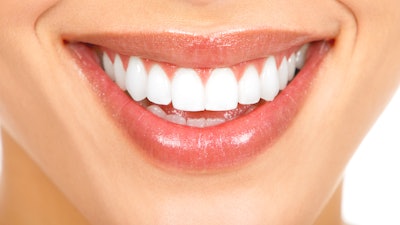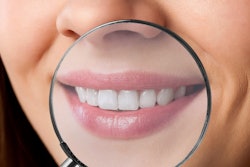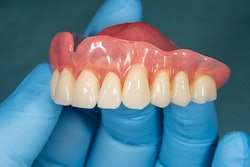
Recurring esthetic dental proportions (RED) -- not golden proportions (GPR) -- may be the best analysis tool to design restorations involving the maxillary anterior area. The study was published earlier this month in the Journal of Esthetic and Restorative Dentistry.
Age and dental education levels may affect the perceptions of smile aesthetics, the authors wrote.
“If the patients whose smiles will be designed are young and have received dental education, it should be considered that their esthetic expectations may be high,” wrote the authors, led by Dr. Aysegul Kurt, PhD, of Trakya University in Turkey (J Esthet Restor Dent, November 11, 2023).
Perfecting a smile
In addition to tooth shape, which is one of the features of an aesthetically pleasing smile, tooth analysis tools, including GPR and RED, have been made available to dentists to standardize the design of restorations for upper incisors. The tools help value proportions for central and lateral canines. However, diverse factors affect the aesthetic perception of the proposed proportions. Therefore, the proportions cannot be applied universally, according to the study.
Researchers conducted this study to explore the effect of different aesthetic dental proportions, which were created using a digital smile design program, on the perception of individuals of varying ages, genders, and dental education levels.
A smile design program was used to create different smiles on facial images of a female and male model. Oval and square tooth shapes were used, and these four dental proportions were used: GPR, golden percentage (GPE), Preston proportion (P), and RED. The models were given 16 different smile designs and then they were presented to 480 fourth- and fifth-year dental students, dentists, specialists, and those with no dental education for scoring. Of those scoring the smiles, 381 of them were between the ages of 18 and 30, while the other 99 were age 30 and older, the authors wrote.
When all the designs were subdivided by tooth shape and gender, GPR design was scored lower than recurring aesthetic dental proportions (p < 0.001), they wrote. The GPR had the lowest score in male models with a rounded tooth form (p < 0.001). The scores of RED and P proportions were higher in female models compared with other proportions (p < 0.001), the authors wrote.
Generally, those age 30 and without dental education who scored smile designs had higher scores on all images of models (p < 0.05), they wrote.
The study had limitations, including that only two basic tooth forms were evaluated. To achieve more natural-looking restorations, combinations of basic tooth forms should be considered, the authors wrote.
Just the start
In the future, more studies should be conducted to better evaluate aesthetic perception in smile design, they wrote.
“Clinically, it should be considered that young patients and people with dental education have high esthetic expectations,” Kurt and colleagues wrote.




















